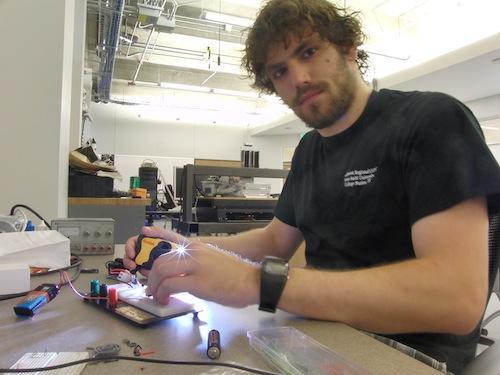Gadget Freak Case #211: High-Speed Photography Circuit
To capture quick events, like the pop of a balloon, James Hartnett created a high-speed circuit that triggers a flash when movement or sound is detected.
April 19, 2012
How fast can you take a picture? Not as fast as you can illuminate a subject. James Hartnett wanted to capture events with fast movements, like the pop of a balloon, that a shutter camera simply can’t accomplish. Since a shutter doesn't move that quickly, he put the camera into a state where the shutter is left open. Then, in a darkened room, to avoid exposing the image, he illuminates the subject with a flash.
To trigger the flash at the right moment, he built a small circuit that sets off the flash upon the detection of an event. If a sound is detected or a moving object activates a trip wire, it will activate the circuit to trigger the flash with minimal delay.

James Hartnett's high-speed circuit can trigger a flash when movement or sound is detected.

The circuit consists of a few primary components: a siliconcontrolled rectifier (SCR), a trigger transistor (in this case, a MOSFET), and a sensor for the trigger.
Read more Gadget Freak cases here
Do you have a Gadget Freak project you would like the world to see? Send a brief description of your gadget and a photo to Senior Editor Rob Spiegel.
{table 1}{table 2}{videoembed|242320}
The editors of Design News have handpicked your favorite Gadget Freak cases from over the years, bringing them together in a dynamic digital edition, complete with videos, which you can view here.
You May Also Like

.jpg?width=300&auto=webp&quality=80&disable=upscale)

